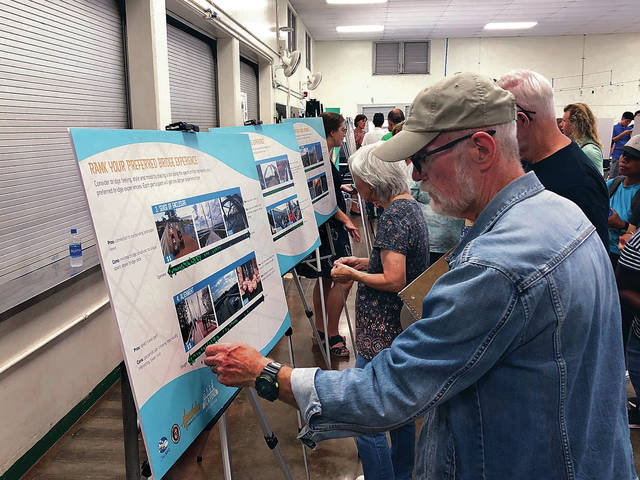
ROB SHIKINA / RSHIKINA@STARADVERTISER.COM
Waikiki resident James Browne voted on a design element for a possible pedestrian and bicycle bridge over the Ala Wai Canal at a community meeting at Ala Wai Elementary School.

Select an option below to continue reading this premium story.
Already a Honolulu Star-Advertiser subscriber? Log in now to continue reading.
A bridge tailored for pedestrians and cyclists along the Ala Wai Canal is seemingly a perfect fit for Honolulu’s “Complete Streets” vision. Among the aims of the Complete Streets ordinance, adopted by the City Council six years ago, is to design urban travel routes for people traveling by foot or pedal power — rather than prioritizing vehicular movement.
At a recent community Opens in a new tabmeeting Opens in a new tab, held at Ala Wai Elementary School, situated near the makai end of University Avenue, most of the dozens of attendees favored moving forward with some sort of fixed link to Waikiki. A bridge spanning a midway point of the 2-mile stretch between the McCully Street bridge and the Kapahulu area is one of four city options.
The others include improving the existing car-centric bridges; navigating the canal by aquabus or tunnel; or doing nothing. The timing seems to be good for the bridge idea, which has been kicking around since the 1950s. City officials say federal funds could cover up to 80 percent of a $15 million project.
Whatever the plan, though, it should carefully address worries about flood mitigation. Congress has appropriated $345 million toward canal fortifications that could include floodwalls or berms, and detention basins further inland.
The Ala Wai is in a 100-year flood area — meaning that there’s a 1 percent chance of flooding occurring in any given year. In the canal’s case, a 100-year event could damage to some 3,000 structures in Waikiki, requiring more than $1 billion in repairs. Despite the long odds, such a scenario should be folded into any construction effort.

